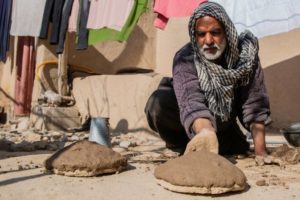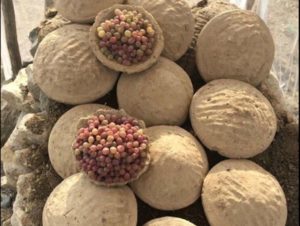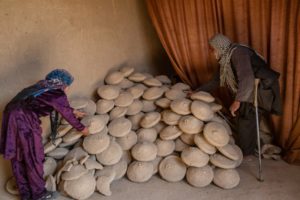Grapes are a staple on afghan dinner tables , you may be surprised to learn that the geographical area of Afghanistan has been growing grapes since at least 2000BC, making it one of the most ancient grape growing areas on the planet.
A myriad of local verities like hussaini, taifi, kasendra, lal, kata, gholafan, red kandahari, raucha, shondakhanai, keshmeshi, black keshmeshi, lal, and mehr amaldi have been developed over the centuries to suite different palates and requirements.
But grapes are at best a summer crops, so Afghans have been preserving them for winter using mud-straw containers called Kangina for hundreds of years, keeping their grapes fresh beyond the growing season.
The Kangina looks like two loaves of sourdough bread stuck together, each kangina is made of two layers of wet clay-rich mud, with each layer being molded into a bowl shape and then put into the sun to bake.

When each pair of rustic “earthenware bowls” is completely dried, around 1kg of ripe unbruised fruit are put inside, and then sealed with another serving of mud to form a single closed, air-tight vessel.

The kangina is then stored in a cool, cellar-like space, away from direct sunlight, with some people preferring to actually bury the vessels underground. The fruit remain fresh for up to 6 months providing Afghans with a taste of the sweet succulence of summer in winter !


Comment